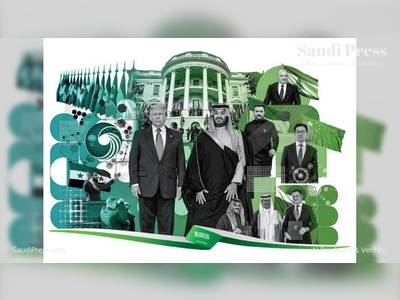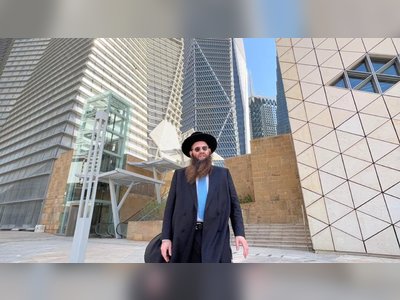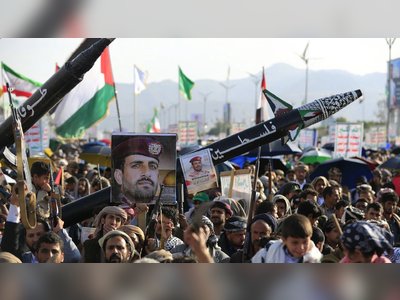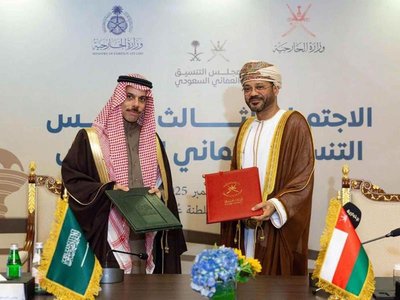
Over a year and $85bn later, US spies still don’t know ‘where, when or how’ Covid-19 hit the world – but it ‘could've been a lab’
On April 14, Director of National Intelligence Avril Haines revealed that after over a year of determined sleuthing, US spying agencies had no concrete answers on basic questions regarding the origins of the 2019 coronavirus.
“It is absolutely accurate the intelligence community does not know exactly where, when, or how Covid-19 virus was transmitted initially,” Haines told members of the Senate Intelligence Committee. “Components have coalesced around two alternative theories, these scenarios are it emerged naturally from human contact with infected animals, or it was a laboratory accident.”
This time last year, Donald Trump alleged he’d seen evidence confirming covid was laboratory-made and, throughout 2020, former MI6 chief Richard Dearlove also claimed the virus was “an engineered escapee” from the Wuhan Institute of Virology.
Haines’ public admission that a “laboratory accident” is a possible explanation is significant because intelligence services have thus far been quick to dismiss the suggestion as a conspiracy theory whenever it’s been aired in public. In response to Trump’s statement for example, the Director of National Intelligence’s office firmly refuted the idea Covid-19 was “manmade or genetically modified.” Of course, the virus could be neither and still have escaped from a lab.
WHO, what, why, where and Wuhan?
While the World Health Organization (WHO) is yet to comment on Haines’ seeming change of heart, the lab theory stands in stark contrast with the agency’s long-held public position. In March, it issued a report, based on the findings of an international team of scientists who spent four weeks in Wuhan probing covid’s origins. They concluded that of all the various explanations, a laboratory leak was by far and away the least likely.
For many though, the report raised far more questions than it answered. Even WHO Director General Tedros Adhanom Ghebreyesus was critical of the team’s investigation – his response to the scientists’ public presentation of their findings was measured yet withering.
“The team…visited several laboratories in Wuhan and considered the possibility that the virus entered the human population as a result of a laboratory incident. I do not believe this assessment was extensive enough,” he said. “Further data and studies will be needed to reach more robust conclusions…this requires further investigation, potentially with additional missions involving specialist experts, which I am ready to deploy.”
Quite an indictment of the 10-strong squad of researchers, considering they had been presented by the mainstream media ahead of their excursion as unimpeachable, world-class authorities on virology and public health determined – and destined – to get to the truth. That their investigation of the laboratory leak theory was so undercooked is particularly striking given the only US-based representative on the team, Peter Daszak, is President of EcoHealth Alliance, which has in recent years conducted extensive work with the Wuhan Institute of Virology (WIV).
Friends and funding
Then again, Daszak would have a great many reasons for leaving certain stones unturned. For one, he’s a close friend and ardent supporter of Shi Zhengli, director of the Center for Emerging Infectious Diseases at WIV, who has been repeatedly forced to deny her lab was the source of coronavirus. In June 2020, Scientific American described the pair as “long-time collaborators” – Daszak also staunchly defended his associate, stating she “leads a world-class lab of the highest standards,” and rubbished allegations she or her organization were in any way responsible for covid’s spread.
From 2014 to 2019, Daszak worked with Zhengli on investigating and cataloging bat coronaviruses across China, an initiative funded by the US National Institutes of Health (NIH) to the tune of $3.7 million. Thereafter, the EcoHealth chief transferred this effort to the University of North Carolina, where he began ‘gain-of-function’ research on coronaviruses and chimeras in humanized mice.
In a December 2019 interview, he somewhat ominously told virologist Vincent Racaniello that some coronaviruses may “get into human cells,” one can “manipulate in the lab pretty easily,” are untreatable with antibodies, and “you can’t vaccinate against them with a vaccine.”
NIH withdrew its backing for the EcoHealth project in April 2020 under pressure from the Trump administration, a move that garnered significant sympathetic media attention for the organisation, and Daszak. The move was reversed to much fanfare in August, and EcoHealth’s funding more than doubled to $7.5 million. However, what no media outlet noted at any stage was the non-profit’s NIH support represents a negligible fraction of its US government income. The overwhelming majority of EcoHealth’s revenue, accounting for almost $40 million between 2013 and 2020, flows from the Department of Defense (DoD).
What happened in 2019?
A State Department factsheet on WIV published in January notes that “several researchers” at the Institute became sick in autumn 2019, “before the first identified case of the outbreak, with symptoms consistent with both COVID-19 and common seasonal illnesses,” raising questions about the credibility of Zhengli’s claims that there was “zero infection” among WIV staff and students prior to the pandemic.
The factsheet also asserted that “scientists in China have researched animal-derived coronaviruses under conditions that increased the risk for accidental and potentially unwitting exposure,” and “secret Chinese military projects” may have been conducted at the Institute since at least 2017.
Perhaps predictably, there was no mention that the US military may have funded, whether directly or indirectly, projects conducted at WIV. It’s notable that $34.6 million of EcoHealth’s DoD funding came from the Defense Threat Reduction Agency, a Pentagon division working to “counter and deter weapons of mass destruction and improvised threat networks.”
‘Rumours and misinformation’
Daszak’s clear conflict of interest in the WHO probe is rendered all the more shocking when one considers he was lead author of a joint statement published in The Lancet in February 2020, which strongly condemned “rumours and misinformation” relating to covid – namely, that it may have emerged from a laboratory.
“Conspiracy theories do nothing but create fear, rumours, and prejudice that jeopardise our global collaboration in the fight against this virus,” the statement, signed by 27 scientists – four of whom hold positions with EcoHealth – contended.
The letter’s publication was highly significant, as it publicly cemented the notion of a scientific consensus around covid’s origins. This ‘consensus’ emerged shortly after a draft genome of the novel coronavirus SARS-CoV-2 had been released for analysis. As MIT’s Technology Review notes, numerous scientists who’d begun studying the draft were surprised by what they found.
Among them was Nikolai Petrovsky, a highly-regarded professor at Australia’s Flinders University and chair of Vaxine, a company that develops immunizations for infectious diseases, which since 2005 has received millions in NIH funding.
“[Computer modeling] generated a startling result: the spike proteins studding SARS-CoV-2 bound more tightly to their human cell receptor, a protein called ACE2, than target receptors on any other species evaluated. In other words, SARS-CoV-2 was surprisingly well adapted to its human prey, which is unusual for a newly emerging pathogen,” Technology Review records.
Petrovsky and his associates immediately set about writing a speculative paper asking whether the virus was “completely natural” or had originated from “a recombination event that occurred inadvertently or intentionally in a laboratory handling coronaviruses.”
The virological is political
But Petrovsky struggled to find a publisher, with at least one open access repository rejecting his work outright. It wasn’t until May 2020 that the paper was finally released, and by that time suggestions of a lab leak had been comprehensively discredited – not least due to Trump’s pronouncements on the matter having made the issue political.
As Technology Review notes, it had become “career suicide for scientists to voice suspicions about a possible lab leak,” and the community was “unwilling to challenge the orthodoxy” as a result. In turn, it was virtually impossible for journalists to write credible stories questioning covid’s origins without being branded Trump apologists, conspiracy theorists, or worse.
The WHO Director General’s pledge to redeploy experts to Wuhan has prompted several scientists, who reluctantly fell victim to this conspiracy of silence, to come forward and voice their concerns. It also raises the prospect that some answers might finally be found.
One would hope that between the WHO, grossly overpaid US intelligence services ($85 billion last year), and millions of independent researchers the world over, the truth may one day emerge. But one shouldn’t hold one’s breath. When powerful people have a vested interest in suppressing inconvenient facts, secrets can be kept forever, and that’s without factoring in the cottage industry that has emerged dedicated to stigmatizing laboratory accident explanations for the pandemic.
A case in point; The Lancet has established a 12-member COVID Commission panel to investigate the origins of the virus. Its chair is none other than the ubiquitous Peter Daszak – and half his taskforce’s members were signatories to the February 2020 statement that did so much to muzzle so many.











